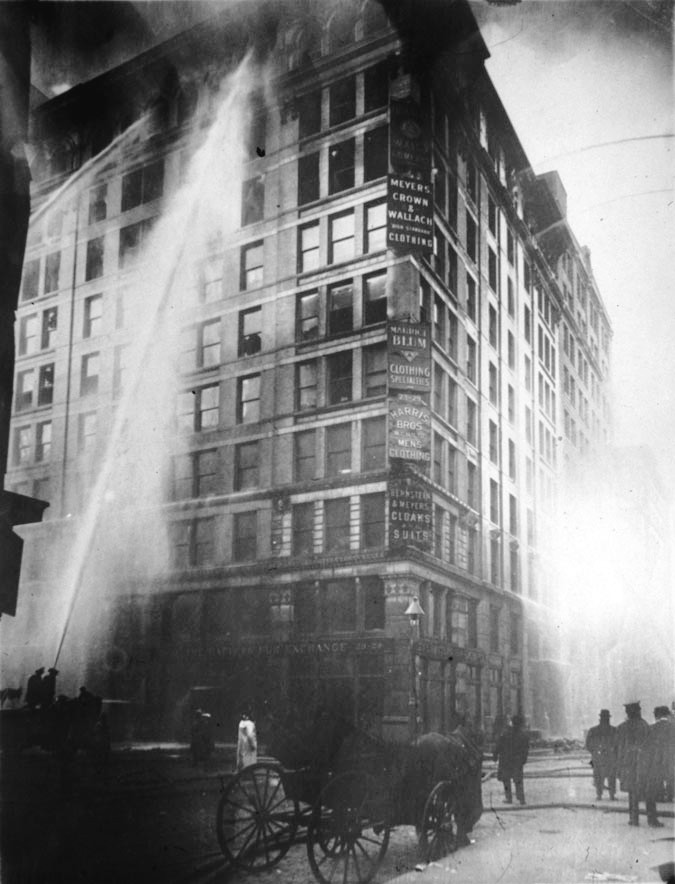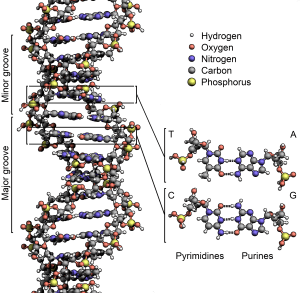It was March 25, 1911, in New York City. It was a Saturday afternoon just like any other at the Triangle Shirtwaist factory, where young immigrant women sat in front of sewing machines, day in and day out, sewing. But on that day a fire broke out, causing the deaths of 146 garment workers. Among those who died in the flames and smoke were 123 women and 23 men.1 Many even jumped or fell to their deaths out the windows, making this event a man-made disaster and one of the deadliest industrial disasters of all time.

The factory was located in the Asch Building at Washington Place in Greenwich Village, one of the wealthiest neighborhoods in the city. The factory occupied the eighth, ninth, and tenth floors of the ten-story building. Max Blanck and Issac Harris were the owners of the factory, and their company was known as the largest firm in the business at the time. They styled women’s blouses known as “Shirtwaists,” which were paired with tailored skirts. This attire had become the standard in fashion for women in the early twentieth century. They were also known to resemble men’s shirts. When it came to their workers, they had hired operators who then contracted out for factory workers. The company itself only dealt with the contractors, and there was no fixed rate of pay for the workers.2 At the time, the factory employed about five-hundred employees, mostly young immigrant women who were of Italian or Jewish descent. These women worked up to eleven-hour shifts on weekdays, and twelve-hour shifts on Saturdays, and they earned between $7-$12 dollars for a 52-hour week. Many of these women were the breadwinners of their household, and their income was sometimes not sufficient to cover their needs.
Towards the end of the workday on that Saturday evening in 1911, a fire broke out around 4:00 pm. The fire started in a scrap bin under one of the cutter’s tables on the eighth floor from what is believed to have come from a cigarette. A manager tried to put the fire out with a hose but the hoses valve was rusted shut, and rotten away. The fire spread quickly and the workers panicked. There was one fire escape that quickly collapsed, and four elevators, which out of the four only one was working. The elevator held twelve people at a time, and it managed to make four rescue trips before it broke down.3 With no other alternatives available, people began throwing themselves out the windows, and some were even crushed to death trying to get out. Workers tried to take the stairs, but the exit doors only opened inward and were kept locked by factory management to prevent theft by the workers, as the managers would check their workers belongings every day before they left for the day.

Celia Saltz Pollack, a survivor of the 1911 Triangle Shirtwaist Fire said,
I remember on that day there was a lot of singing and happiness in the shop because it was the end of the week and we got paid. We were soon all going to go home. When the fire started I was sitting at my machine. I looked up and saw the fire near the cutting tables but I did not think it was so terrible. What was terrible was that the fire spread in a split second.
By the time the firefighters arrived, they came to the realization that their ladders could only extend up to the sixth or seventh floors. With no other option, sixty-two workers jumped and fell to their deaths, while the remaining died from the smoke and flames within the building.4

This fire not only pushed issues of unsafe factories and immigrant exploitation into the public consciousness, but for the first time the fire allowed for attention to be brought to deplorable conditions of New York factories.5 Women obtained well deserved attention onto current work conditions and safety measures in the workplace. Although the Triangle Shirtwaist Factory fire brought a feeling of resentment and heartbreak to many, this event and its victims will always be remembered.
- Ric Burns, “Triangle Shirtwaist Fire,” New York Times (1923-Current File), Nov 24, 1999. ↵
- Jonathan Fink, “Conflagration and Wage: The Triangle Shirtwaist Factory Fire, 1911,” TriQuarterly, no, (2009): 135-136. ↵
- Gale Encyclopedia of U.S. Economic History, s.v. “Triangle Shirtwaist Fire,” by Thomas Carson and Mary Bonk. ↵
- Mia Lynn Mercurio, Régine Randall, “Tributes Beyond Words: Art Educators’ Use of Textiles to Memorialize the Triangle Shirtwaist Factory Fire.” Journal for Learning through the Arts no. 1 (2016): 4-5. ↵
- Albert Marrin, Flesh and blood so cheap: The Triangle fire and its legacy (New York: Alfred A. Knopf, 2011), 23-25. ↵




135 comments
Luke Willis
This article was very interesting. I had never heard of this fire before and i did not know that it caused so much death. This is interesting because i cannot believe the horrible conditions that these people worked in. Also there was no safety or precautions for something like this and it is ridiculous that the stair doors were locked. Great article.
Tyler Sleeter
Great article. I remember studying this in high school because it was such a tragic event that had long-reaching effects. It is a shame that these women were treated so poorly and so many had to die as a result of poor working conditions. But this is just another example of a how a it often takes a tragic event to make changes. It is good that so many people stepped up and demanded safer working conditions after this event and the government took notice.
Maria Callejas
What a great article, I was hooked the entire time. I had no prior knowledge of this topic, so it was a total learning experience for me. This was indeed a horrific event, I can’t imagine the pain of the families who lost loved ones. This really depicts how the working conditions of the 1900s were horrific. It got me thinking, are workers being protected better now? I really hope so. Great job!
Marco Picardo
Such a tragic event that could have ultimately been avoided. However, this event is important in more ways than one. It made the public push for more laws ensuring a safer working environment for factory workers. So out of all the bad with this incident there came good. Nonetheless, it shouldn’t have taken an incident like this to spark that kind of talk. If there were better regulations in place all those people wouldn’t have lost their lives. Such a shame that it always takes a tragic disaster to invoke change.
Mario Sosa
It is rather sad that it would take such a tragic disaster for there to be better safety conditions in these industrial factories. I found the first-hand account to be terrifying, to hear that these ladies would be singing happily getting reading for the weekend and just minutes later many of them would get engulfed in flames. Excellent article, very interesting topic; job well done.
Michelle Falcon
This was the second time I have read this article, it was honestly just as heart breaking reading it the second time as it was the first time. In my last comment I talked about before how much of a tragedy it was to think about all of the families that were left behind. However I would like to point out this time around how well written this article was. It gave us as readers a since of how it was when this horrible tragedy accrued.
Cherice Leach
What a tragic story. I love that you start your story in the action, it really captivated my attention. It’s very sad that the factory owners really had no concern of these workers safety. If the doors would have been able to open then many more people could have escaped this deadly fire. It’s also quite sad that people just started jumping out of windows hoping to survive… Very heartbreaking story.
Mark Martinez
An extremely well written and put together article. It just makes absolutely no sense to me why something tragic seems to happen to make the public aware of the situation. Not only was this preventable if the build was in working condition, but if there is rust on something so important like the water hose it’s a sign to fix it.
Erin Vento
The Triangle Fire is a very tragic and important moment in America’s history. What I really loved about this article is how you took us through the event and showed how they were really trapped in there. I also liked how you used that to connect the fire to workers rights, along with the quote from the woman who worked there and the pictures you used. Overall this was a really great look into a sad and historic day in America.
Rebekah Esquivel
This was a very tragic story to read about. The fact that so many workers had to jump out the windows knowing they were going to die either way is so sad. This story goes to show that the use of immigrant workers and their working conditions need to be greatly improved. They were working crazy hours with very little pay in an unsafe environment. It is sad that 146 people lost their lives before changes were made to this kind of work. Overt time I’m sure working conditions have been improved but are still not up to where they should be.